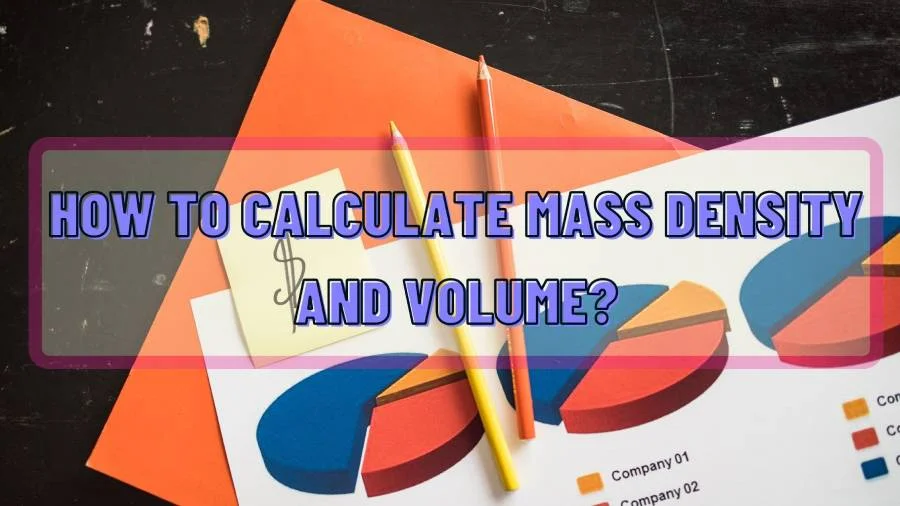How to Calculate Mass Density and Volume: To determine the mass density and volume of any object, you must have information about the mass and dimensions of the object or substance. The formula for calculating mass density and volume vary depending on the shape and nature of the object. Basically, mass density is denoted by the Greek letter rho (ρ).
Table of Contents
What is Density?
Density is a measure of mass per unit of volume (v). This property of materials is used in various fields such as physics, chemistry, and engineering. The standard unit of density is kilograms per cubic meter (kg/m³).
What is the Density Formula?
To calculate density, you need to know the mass of the object and its corresponding volume. Make sure the mass is in grams (g) or kilograms (kg), and the volume in cubic units such as cubic centimeters (cm³) or cubic meters (m³).
Here is the basic formula for calculating Density (ρ): (d = m ÷ v).
Where,
- d = density (ρ)
- V = volume
- m = mass
How to Calculate Mass Density and Volume?
In order to calculate mass density and volume, you need to have the mass and dimensions of the object. Here is the step below to calculate the mass density and volume.
How to Calculate Volume from Mass and Density?
To calculate volume, rearrange the formula of density in order to divide your mass figure by density figure: (v = m ÷ d).
However, the method for calculating volume depends on the shape of the object. Here are some common shapes and their corresponding volume formulas:
Regular Solid: You can use specific volume formulas for objects with regular shapes such as cubes, rectangular prisms, cylinders, or spheres. For example;
- Cube: Volume = side length^3
- Rectangular Prism: Volume = length × width × height
- Cylinder: Volume = π × radius^2 × height
- Sphere: Volume = (4/3) × π × radius^3
Irregular Shape: You can use displacement methods for objects with irregular shapes. Here are some methods:
- Submerge the object into a known volume of water in a graduated cylinder or beaker.
- Measure the changes in volume of water.
- The change in volume represents the volume of the object.
How to Calculate Mass Using Density and Volume?
To calculate mass, you need to the density and volume of the object. You can calculate the mass (m) using the formula: (Mass = Density × Volume).
Ensure the density is in grams per cubic centimeter (g/cm³) or kilograms per cubic meter (kg/m³) units, and the volume is in cubic units like cubic centimeters (cm³) or cubic meters (m³).
Related: How to Figure Out Body Fat Percentage?
How Do You Calculate the Mass of the Liquid?
To calculate the mass of the liquid, first you have to figure out the total mass of the empty graduated cylinder or beaker using the triple beam balance. Note the mass and pour the liquid into the graduated cylinder or beaker and place it on the triple beam balance.
Now, subtract the mass of the empty graduated cylinder or beaker from the mass with the liquid. For example,
If, the empty graduated cylinder or beaker mass 100g, and graduated cylinder or beaker with liquid mass 135g. Then, ( graduated cylinder with liquid – empty graduated cylinder) = mass of the liquid = (135-100)= 35g.
FAQs:-
01. How are Density Mass and Volume Related?
Ans. Density is a measure of mass per unit of volume (v). The mass is equal to the volume multiplied by the density (M = Vd), whereas the volume is equal to the mass divided by the density (V= m/d).
02. How Can You Calculate Mass if Density and Volume are Known ?
Ans. If density and volume are known, you can calculate mass by multiplying density by volume (M = d x V).
03. How to Calculate the Volume?
Ans. To calculate volume, use this formula (Volume = Height x Width x Depth).
